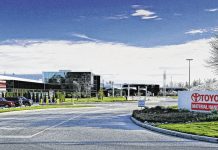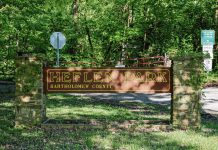The city is exploring whether there is interest in having small commercial centers within walking or biking distance of more neighborhoods.
With a few cases of commercial developments already located in or near residential areas, the Columbus Plan Commission asked the city planning department to see if neighborhood businesses — grocery stores, bookstores or bakeries, for example — could be successfully incorporated into more residential areas, said Emilie Pinkston, senior planner with the city.
As part of their study, city planners examined existing neighborhood commercial areas at 11th Street and Lafayette Avenue; 16th Street and Home Avenue; 23rd and California streets; 25th Street and Talley Road; and Gladstone and McKinley avenues, said Jeff Bergman, city-county planning director.
Resident input was sought through a survey sent to 855 households, with 95 responses received, Pinkston said.
[sc:text-divider text-divider-title=”Story continues below gallery” ]
Columbus planners also sought input from outside of the city, including Carmel, Westfield and Bloomington to learn how neighborhood commercial areas are developed in those communities.
That helped local officials see how neighborhood commercial centers were designed, what characteristics they have and whether they could be implemented or recommended in Columbus. Bergman said the city looked at aspects found in peer communities such as buffering and landscaping.
In one instance, a large commercial development and a residential neighborhood were constructed by the same developer and looked similar in appearance, Bergman. However, that hasn’t occurred in Columbus, he said. Three maps have been created that identify locations of necessity goods, small-scale shops and restaurants, Pinkston said.
In their study, planners are determining which residential areas of the city are within a quarter-mile or half-mile radius of the locations, she said.
Bergman said it is important to ensure that if interest develops for neighborhood commercial centers, they don’t have negative consequences for residential neighbors.
“It’s about understanding the lay of our city in terms of how accessible these neighborhood commercial (areas) are and then putting the pieces into place so that the planning commission is ready to respond when there are opportunities for neighborhood commercial,” Bergman said.
Jack Schmeckebier, who lives on Talley Road, said many services that a neighborhood commercial center might offer are already located near his residence, including Kroger and Marsh grocery stores.
Izzie Nowlin, who lives in downtown Columbus, said she often walks to the Sweet Rose Bakehouse on Home Avenue. Nowlin said she is comfortable with the stores within reach in the area of 16th Street and Home Avenue, but would like to get small grocery items closer to home rather than traveling along busy thoroughfares.
“For people who don’t own a car in my neighborhood or drive, it’s hard,” Nowlin said.
As the city has grown, many single-family developments are getting further away from commercial areas, Pinkston said. That has presented difficulties for people who do their shopping by using alternative modes of transportation such as walking, bicycling or public transit, she said.
Bryanna Mellencamp, who operates the Shabby Sheep & Ewe knitting and crochet shop at 1113 16th St., said she often sees people walking along 16th Street, carrying grocery bags.
Many of them, she said, are likely going to conveniences stores to pick up some of their grocery items.
[sc:pullout-title pullout-title=”Pull Quote” ][sc:pullout-text-begin]
“It’s about understanding the lay of our city in terms of how accessible these neighborhood commercial (areas) are and then putting the pieces into place so that the Planning Commission is ready to respond when there are opportunities for neighborhood commercial.”
— Jeff Bergman, city-council planning director
[sc:pullout-text-end]




